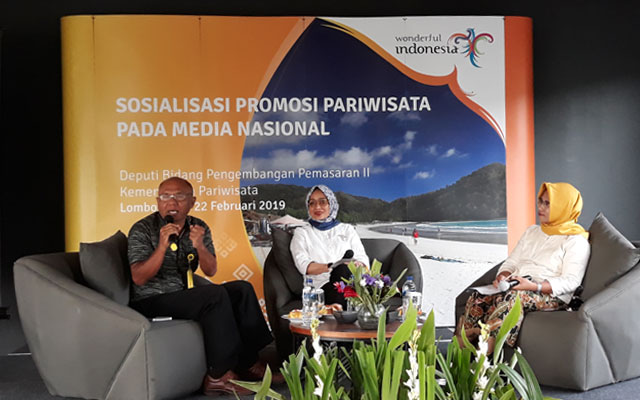Indonesia’s Ministry of Tourism will continue to target 20 million arrivals this year, despite its failure to meet its volume goals two years in a row.
Instead, the tourism authority has set an even more ambitious target, stating that half of the total should be reached within the first six months of the year, despite Indonesia’s peak season traditionally falling in the second half.

Visitor arrivals to Indonesia totalled 14.1 million in 2017, when the target was 15 million arrivals. Last year, the country welcomed 15.8 million arrivals, down from its target of 17 million.
Nia Niscaya, Indonesia’s deputy minister of marketing development area II, attributed the shortages in 1.2 million arrivals for 2018 to the earthquake in Lombok, as well as the tsunamis in Palu and Sunda Straits. Earlier in 2017, inbound numbers to Indonesia were massively affected by Mount Agung’s eruption.
She added that when Bali was hit with a natural disaster, the impact was felt more keenly, as 40 per cent of international arrivals were to Greater Bali. Islands surrounding Bali, such as Lombok, were also inadvertently affected.
“The Lion Air accident also had a big impact, especially on the China market. Lion Air had a lot of chartered services from China, where many were cancelled after the accident,” Nia lamented.
While she acknowledged the target set out this year is challenging, she believes the figures are realistic.
“We are working all out to meet the 10 million target (by June), and hit the 20 million mark by the end of the year,” she shared during a recent media presentation publicising the ministry’s 2019 marketing programme in Lombok.
The ministry has also prioritised tourism programmes – such as boosting border tourism, creating strategic hub and developing LCC terminals – ints push to achieve the 10 million arrival mark.
According to Nia, Singapore is a strategic hub that Indonesia will be leveraging as several of its top markets (China, India, South Korea and Japan) are also Indonesia’s market focus.
The ministry is planning to leverage on Malaysia and Thailand as well, to lure outbound traffic from India. However, while China is Thailand’s top source market, the distance between Thailand and Indonesia has not made it easy to twin the countries.
To encourage more sales to Indonesia, Nia shared that the ministry was working closely with major wholesalers, OTAs and airlines on co-branding and incentive programmes. As well, they are also encouraging more LCCs to operate routes to Indonesia.
In 2017, 55 per cent of arrivals to Indonesia was on full-service carriers, while the rest arrived on LCCs. Internationally, passenger growth on full-service carriers stood at 12 per cent, while LCCs was 21 per cent.
“We hope to encourage more LCC services by providing promotional support,” Nia revealed.
To support potential growth, the ministry has also negotiated with airport authority Angkasa Pura II to convert several of their terminals to LCC terminals.




















